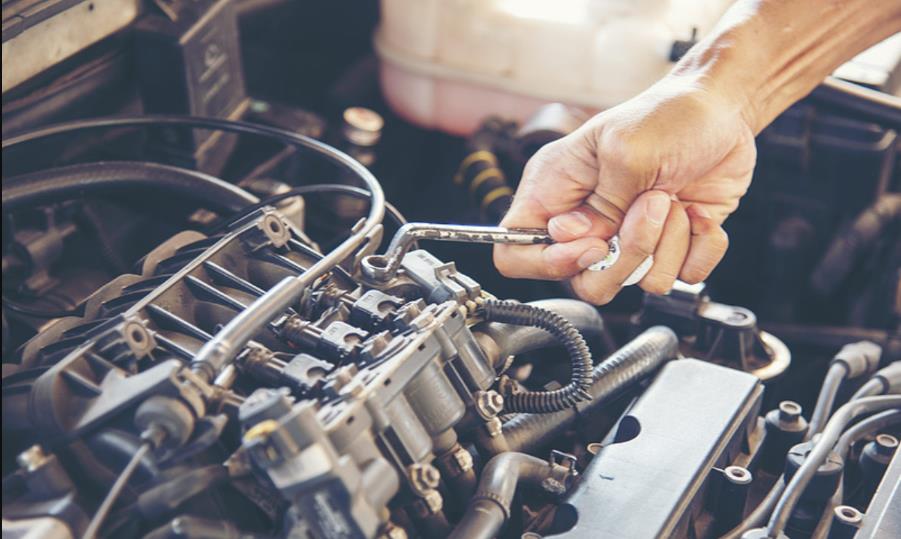- Jeep Cherokee Push Button Start Not Working: Troubleshooting Tips To Get You Back on the Road Fast! - 11 November 2023
- Haval H2 Problems: The Complete Troubleshooting Guide - 11 November 2023
- Gwm P Series Problems: Troubleshooting Guide for Common Issues - 11 November 2023
To fix car vibration, start by checking the tire pressure and balance. If the issue persists, have the suspension and wheel alignment inspected by a professional.
Car vibrations can be a frustrating problem that can affect the overall driving experience. If your vehicle is experiencing vibrations, it is important to address the issue promptly. There are several potential causes for car vibrations, and identifying the root cause is essential for an effective solution.
We will explore some common causes of car vibrations and provide tips on how to fix them. By following these steps, you can ensure a smoother and more enjoyable ride in your car. So let’s dive in and discover how you can fix car vibrations and get back on the road with confidence.
Understanding Car Vibration
Car vibrations can be frustrating and indicative of underlying issues. In this guide, we explore tips and techniques to fix car vibrations, ensuring a smoother ride and better overall performance.
Car vibration can be a frustrating and unsettling experience for any driver. Not only does it affect the comfort of your ride, but it can also be an indication of potential mechanical problems. To address car vibration effectively, it’s important to first understand its causes and identify the source. In this section, we will delve into the common causes of car vibration and how you can identify the specific source of the issue.
Common Causes Of Car Vibration
Car vibration can stem from various factors, some more common than others. Here are a few frequent culprits behind that unwanted shaking sensation:
- Poor Wheel Alignment: Misaligned wheels can lead to an uneven distribution of weight and result in vibrations. This issue is often noticeable at higher speeds.
- Worn or Unbalanced Tires: Tires that are unevenly worn or out of balance can contribute to vibrations. A tire imbalance occurs when the weight distribution around the tire is uneven, causing an irritating shake.
- Brake Issues: A warped brake rotor or worn brake components can cause your car to vibrate when you apply the brakes.
- Suspension Problems: Worn out shocks, struts, or bushings can cause vibrations, especially when driving over bumps or uneven roads.
- Engine Troubles: A misfiring spark plug, a malfunctioning fuel injector, or an engine mount that’s gone bad can also lead to car vibrations.
Identifying The Source Of The Vibration
Pinpointing the exact source of car vibration can be a daunting task, but it’s crucial for effective troubleshooting. Follow these steps to help identify the specific cause:
- Start by ruling out the obvious factors. Check your tire pressure and condition, ensuring they are properly inflated and free from excessive wear or damage.
- Inspect your wheels for any signs of damage, such as bends or dents. Check for loose lug nuts as well.
- Next, examine your brake components. Look for any signs of wear, warping, or unevenness. If necessary, take your vehicle to a trusted mechanic for a thorough brake inspection.
- Take note of when the vibrations occur. Do they happen when you accelerate, decelerate, or turn? This information can help narrow down the potential causes.
- If the vibrations persist, it’s recommended to bring your car to a qualified mechanic who can utilize diagnostic tools to identify the source more accurately.
By understanding the common causes of car vibration and actively identifying the source, you can take the necessary steps to fix the issue promptly. Addressing car vibration not only improves your driving experience but also ensures the safety and longevity of your vehicle. Stay tuned for the next section, where we will explore various methods for fixing car vibration.

Credit: www.icdrex.com
Addressing Wheel & Tire Issues
When it comes to car vibrations, wheel and tire issues are often the culprits. Addressing these issues is crucial for a smooth and enjoyable driving experience. By properly checking tire pressure and wear, balancing and aligning your wheels, and inspecting and replacing tires when necessary, you can resolve car vibrations and ensure your vehicle’s optimal performance. Let’s dive into these essential steps:
Checking Tire Pressure And Wear
Regularly checking tire pressure and wear is a simple yet effective way to address car vibrations. Low tire pressure can lead to imbalances and uneven wear, causing vibrations. To determine the optimal tire pressure for your vehicle, refer to the manufacturer’s recommendations. Inspect each tire’s sidewall for the recommended PSI (pounds per square inch) and use a tire pressure gauge to check and adjust accordingly.
In addition to maintaining proper pressure, monitoring tire wear is equally important. Uneven wear patterns, excessive tread wear, or sidewall damage can all contribute to vibrations. Inspect your tires regularly for signs of wear, including tread depth and uneven surfaces. If you notice any abnormalities, it may be time to replace the tires.
Balancing And Aligning Your Wheels
Imbalanced or misaligned wheels can result in noticeable vibrations. To address this, it’s essential to have your wheels balanced and aligned regularly. Wheel balancing involves adding small weights to counteract any imbalances caused by uneven weight distribution. This process ensures that your wheels rotate smoothly and reduces vibrations.
Wheel alignment, on the other hand, focuses on adjusting the angles of your vehicle’s suspension system. Over time, the suspension can become misaligned due to various factors, including hitting potholes or curbs. Proper alignment ensures that all four wheels are parallel and facing the correct direction, promoting even tire wear and minimizing vibrations.
Inspecting And Replacing Tires
Inspecting your tires for signs of damage or wear is crucial for both your safety and a smooth driving experience. Regularly checking for punctures, bulges, cracks, or tread wear is recommended. If you detect any significant damage—such as a punctured sidewall or a worn-out tread—it’s essential to replace the tire promptly.
When replacing your tires, ensure you choose ones that are suitable for your vehicle and driving conditions. Consider factors such as weather, road conditions, and your driving style. Installing new, high-quality tires will not only eliminate vibrations but also enhance traction, handling, and overall performance.
By addressing wheel and tire issues through regular maintenance and proper inspections, you can effectively fix car vibrations and maintain a safe and comfortable driving experience.
Diagnosing Engine Problems
Is your car trembling and vibrating while you’re driving? This may be a sign of engine problems that need to be addressed. Diagnosing engine problems early on can save you from costly repairs down the road. Let’s take a closer look at some of the key areas to check when it comes to diagnosing engine problems and fixing car vibrations.
Checking Engine Mounts
One of the first areas to inspect when diagnosing engine problems is the engine mounts. Engine mounts are responsible for securing the engine to the frame of the car, reducing vibrations and ensuring a smooth ride. Over time, these mounts can wear out or become damaged, leading to excessive engine movement and vibrations. To check the engine mounts, follow these steps:
- Open the hood of your car and locate the engine mounts.
- Inspect the mounts for any signs of wear, such as cracks or deterioration.
- If any damage is detected, it’s time to replace the engine mounts to restore stability and reduce vibrations.
By addressing worn or damaged engine mounts, you can effectively reduce car vibrations and enhance your driving experience.
Inspecting Spark Plugs And Ignition System
Another common cause of car vibrations is a faulty spark plug or ignition system. Spark plugs play a crucial role in the combustion process, igniting the fuel and air mixture in the engine. Over time, spark plugs can become worn or fouled, resulting in an uneven or weak ignition. Inspecting the spark plugs and ignition system can help identify and resolve such issues. Follow these steps to inspect the spark plugs and ignition system:
- Locate the spark plugs by referring to your car’s user manual.
- Remove the spark plugs using a spark plug socket and inspect them for signs of wear, such as erosion or carbon buildup.
- If any spark plugs appear damaged or worn out, replace them with new ones.
- Additionally, check the ignition system components, such as the ignition coils and wires, for any signs of damage or corrosion. Replace any faulty components as needed.
By maintaining a healthy spark plug and ignition system, you can ensure proper engine performance and minimize vibrations.
Addressing Fuel System Issues
A malfunctioning fuel system can also contribute to car vibrations. Issues such as clogged fuel injectors or a dirty fuel filter can disrupt the flow of fuel to the engine, leading to rough idling and vibrations. To address potential fuel system issues, follow these steps:
- Check the fuel injectors for any signs of clogging, such as uneven spray patterns or buildup.
- If clogging is detected, clean the fuel injectors using a quality fuel injector cleaner according to the manufacturer’s instructions.
- Inspect the fuel filter and replace it if it appears dirty or clogged.
- Additionally, make sure the fuel pump is functioning properly. A faulty fuel pump may not deliver enough fuel pressure, resulting in engine vibrations.
By addressing fuel system issues and ensuring an uninterrupted fuel flow, you can restore smooth engine operation and eliminate vibrations.
Resolving Suspension And Steering Complications
Resolve suspension and steering complications with these effective tips to fix car vibrations. Discover the causes behind the issue and learn step-by-step methods to alleviate the problem for a smooth and comfortable ride.
Checking Suspension Components
When experiencing car vibrations, it is crucial to inspect the suspension components as they play a significant role in maintaining a smooth and stable ride. Start by visually examining each suspension part, such as the shock absorbers, struts, and springs, for any visible signs of damage or leakage. Ensure that all bolts and fasteners are tight and secure. Pay close attention to any loose or broken connections that could potentially cause vibrations. Additionally, inspect the suspension mounts for wear or excessive movement. If you notice any issues during the visual inspection, it is recommended to have a professional mechanic thoroughly examine and diagnose the problem.Inspecting And Replacing Worn-out Bushings
Worn-out bushings can be a common cause of car vibrations. These small rubber or polyurethane components act as cushions and reduce the friction between various suspension and steering parts. Over time, bushings can deteriorate or become damaged, leading to excessive movement and vibration. To check for worn-out bushings, carefully inspect them for cracks, tears, or signs of excessive wear. Pay attention to areas such as the control arms, sway bars, and subframe mounts. If you suspect any worn-out bushings, it is recommended to have them replaced promptly. Replacing the bushings will restore the stability and smoothness of your car’s suspension, effectively reducing vibrations.Addressing Steering System Issues
The steering system is another critical area to address when troubleshooting car vibrations. Begin by checking the power steering fluid level, ensuring it is at the appropriate level as specified in your vehicle’s owner’s manual. Low fluid levels or contaminated fluid can lead to steering issues and vibrations. If the fluid appears dirty or has a burnt smell, it may be necessary to flush and replace it. Additionally, inspect the steering linkage and tie rods for any signs of play or wear. If there is excessive play or looseness, it is advisable to have the affected parts replaced. Proper alignment is also crucial for a smooth and vibration-free ride, so consider getting a professional wheel alignment if necessary.By thoroughly checking the suspension components, inspecting and replacing worn-out bushings, and addressing any steering system issues, you can effectively resolve suspension and steering complications that may be causing car vibrations. Remember to consult a qualified mechanic for any complex issues or if you are unsure about the diagnosis or repair process. A smooth and vibration-free ride not only enhances your driving experience but also ensures the safety and longevity of your vehicle.Other Possible Causes And Solutions
While an unbalanced wheel or tire issue is a common cause of car vibration, there are several other potential culprits that you should consider. By checking for loose or damaged exhaust system components, investigating brake system issues, and addressing problems with the drivetrain, you can pinpoint and resolve the source of the vibration.
Checking For Loose Or Damaged Exhaust System Components
In some cases, car vibrations can be attributed to loose or damaged components within the exhaust system. A faulty exhaust system can lead to excessive vibrations, affecting the smooth operation of your vehicle. To identify potential issues with the exhaust system, follow these steps:
- Visually inspect the exhaust system, paying close attention to the exhaust pipes, muffler, and catalytic converter.
- Check for any signs of damage, such as cracks, holes, or loose connections.
- If you come across any issues, it is crucial to address them promptly. Depending on the extent of the damage, you may need to repair or replace the affected components.
Investigating Brake System Issues
A malfunctioning brake system can also contribute to car vibrations. If your car vibrates primarily when applying the brakes, it is essential to inspect the brake system for potential issues. Follow these steps for a thorough investigation:
- Check the brake pads for any signs of abnormal wear or damage, such as uneven thickness or excessive wear on one side.
- If the brake pads are worn out, replace them with new ones to ensure proper braking performance.
- Inspect the brake rotors for warping, scoring, or uneven wear. If necessary, resurface or replace the rotors to restore smooth braking.
- Ensure that all brake calipers are functioning correctly and are not sticking.
- Properly lubricate the brake system components to prevent any unnecessary friction.
Addressing Problems With The Drivetrain
The drivetrain, which includes components like the transmission, driveshaft, and differential, can also contribute to car vibrations. To identify and address drivetrain-related issues, follow these steps:
- Inspect the transmission fluid for any signs of contamination or low levels. If necessary, change or top up the fluid.
- Check the driveshaft for any damage or excessive play. If you notice any issues, it may be necessary to replace the driveshaft.
- Examine the differential for leaks or signs of damage. If leakage or damage is detected, address the issue promptly to maintain proper drivetrain functionality.
- Ensure that all drivetrain components are properly aligned and tightened to prevent vibrations caused by misalignment.
Frequently Asked Questions On How To Fix Car Vibration
How Do I Know If My Car Is Vibrating Abnormally?
If you feel a constant shaking or vibrating sensation while driving, it’s a sign of abnormal car vibration.
What Are The Common Causes Of Car Vibration?
Common causes of car vibration include unbalanced wheels, worn-out suspension components, and engine misfires.
How Can Unbalanced Wheels Lead To Car Vibration?
Unbalanced wheels can cause car vibration by creating uneven weight distribution, resulting in a shaky ride.
What Should I Do If My Car Vibrates At High Speeds?
If your car vibrates at high speeds, you should check for issues such as wheel alignment, tire balancing, and worn-out shock absorbers.
Can Engine Problems Cause Car Vibration?
Yes, engine problems like misfiring spark plugs or faulty motor mounts can cause car vibration, especially when accelerating.
Conclusion
To summarize, fixing car vibrations requires a systematic approach. Start by identifying the underlying cause, which can range from tire imbalances to worn-out suspension components. Once identified, take the necessary steps to address the issue promptly, whether it involves tire rotation, wheel alignment, or replacing worn parts.
Regular maintenance and timely fixes can ensure a smoother and safer driving experience. Don’t let car vibrations go unnoticed; tackle them head-on for an enjoyable ride.


